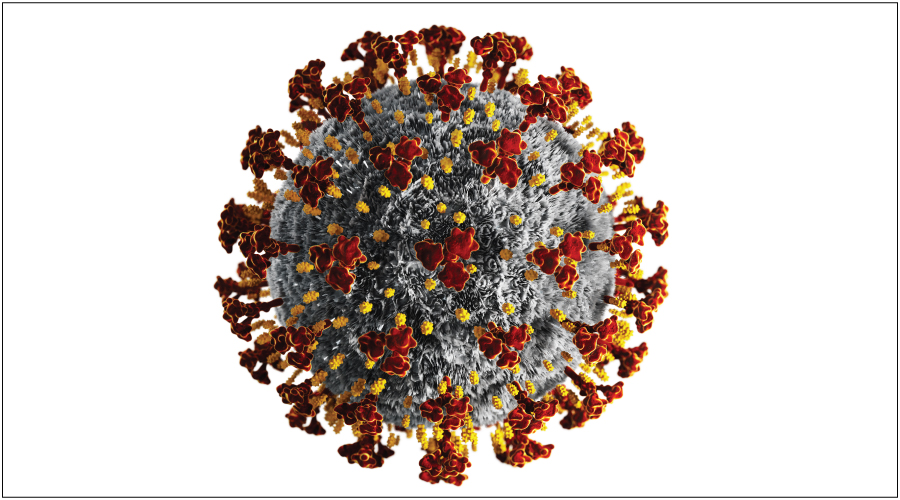COVID-19 Updates and Developments (Week of December 7)
- December 11, 2020

An advisory panel recommended December 10 that the Food and Drug Administration (FDA) issue an emergency authorization for the COVID-19 vaccine candidate developed by Pfizer Inc. and German partner BioNTech.
The Vaccines and Related Biological Products Advisory Committee voted 17-4, with one abstention, that the benefits of the Pfizer-BioNTech COVID-19 vaccine outweigh its risks for use in individuals 16 years of age and older. The FDA is expected to follow the recommendation of the independent advisors and issue an emergency use authorization (EUA) for the vaccine candidate shortly.
The companies have reported a 95% efficacy rate for their messenger RNA (mRNA)-based vaccine, BNT162b2, without major safety issues following a final analysis of late-stage clinical trial data.
The New England Journal of Medicine published this week peer-reviewed data confirming the 95% efficacy for a two-dose regimen of BNT162b2.
“We have been looking forward to presenting our robust data package to the committee of vaccine experts for the U.S. government since we began our efforts to develop a novel COVID-19 vaccine earlier this year,” said Dr. Albert Bourla, Pfizer Chairman and CEO in a statement. “We are pleased with the committee’s strong majority vote, and if the FDA issues an authorization, stand at the ready to bring this vaccine to people in the U.S. in an effort to help combat this devastating pandemic.”
Department of Health and Human Services (HHS)
December 8—HHS issued updated guidance for hospitals on reporting COVID-19 data. The guidance details the federal government's data needs, explains the division of reporting responsibility between hospitals and states, and provides clear, flexible options for the timely delivery of this critical information.
December 7—More than 9,000 nursing homes will divvy up roughly $523 million in the second round of provider relief funding tied to performance as measured by COVID-19 infection and mortality rates among residents, according to an HHS press release. The performance payments are being made to nursing homes that demonstrated significant reductions in COVID-19-related infections and deaths between September and October, the agency said. The agency distributed more than $330 million in the first round of performance payments. In July, the agency said it would distribute an additional $5 billion in aid to nursing homes—$2.5 billion of which already has been delivered for immediate COVID-19-related expenses like testing, staffing, and personal protective equipment. The agency also set aside up to $2 billion for distributions specifically tied to performance to reward nursing homes that keep new COVID-19 infection and mortality rates among residents lower than the communities they serve. HHS reported that 9,248 (69%) of the 13,795 eligible nursing homes met the infection control criteria, which is less than the 77% of facilities that did so in the first performance period. “While less than the first cycle, the collective efforts of these nursing homes resulted in over 3,900 fewer infections relative to the rates seen in the communities where they exist,” HHS said. Sixty-eight percent of eligible nursing homes, or 9,128, met mortality criteria, the agency added. Three more rounds of performance payments are planned over the coming months.
December 7—HHS released new hospital COVID-19 capacity data at the facility level. The data previously was aggregated at the state level, which the agency said can mask what’s happening at each local hospital. By releasing data on a per-hospital basis, HHS hopes researchers, policy makers, and others will have a better picture of local COVID-19 response efforts. HHS plans to update the data weekly going back to August 1.
Food and Drug Administration
December 9—The FDA issued an EUA to LabCorp for the first COVID-19 direct-to-cosumer test system that doesn't require a prescription. The Pixel COVID-19 Test Home Collection Kit allows individuals, 18 years and older, to self-collect a nasal swab sample at home and then send it to LabCorp for testing. A health care provider will deliver positive or invalid test results to the user by phone; negative results will be delivered by email or online portal.
December 4—FDA issued industry guidance on conducting clinical trials for medical products during the COVID-19 public health emergency. FDA said the guidance provides “general considerations to assist sponsors in assuring the safety of trial participants, maintaining compliance with good clinical practice (GCP), and minimizing risks to trial integrity for the duration of the COVID-19 public health emergency.”
December 4—FDA authorized the first diagnostic test for at-home collection of patient samples for both COVID-19 and the flu. Specifically, the FDA authorized Quest Diagnostics’ RC COVID-19+Flu RT-PCR Test for prescription use with the company’s self-collection kit. Pursuant to a physician’s order, individuals can collect samples at home and ship it to a Quest Diagnostics laboratory for testing.